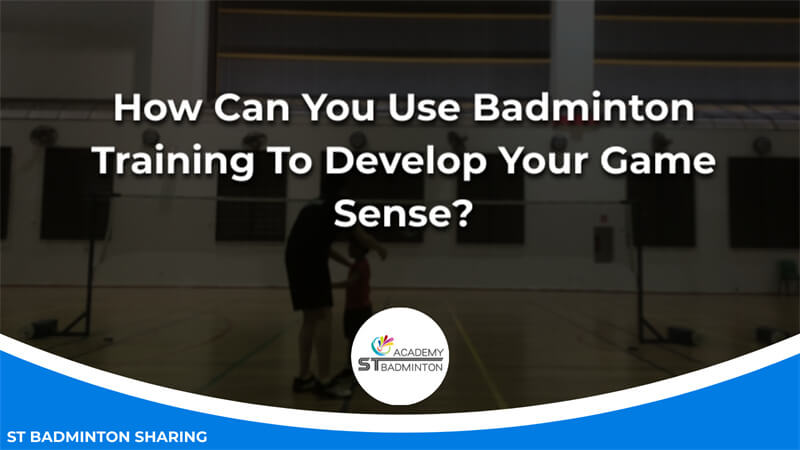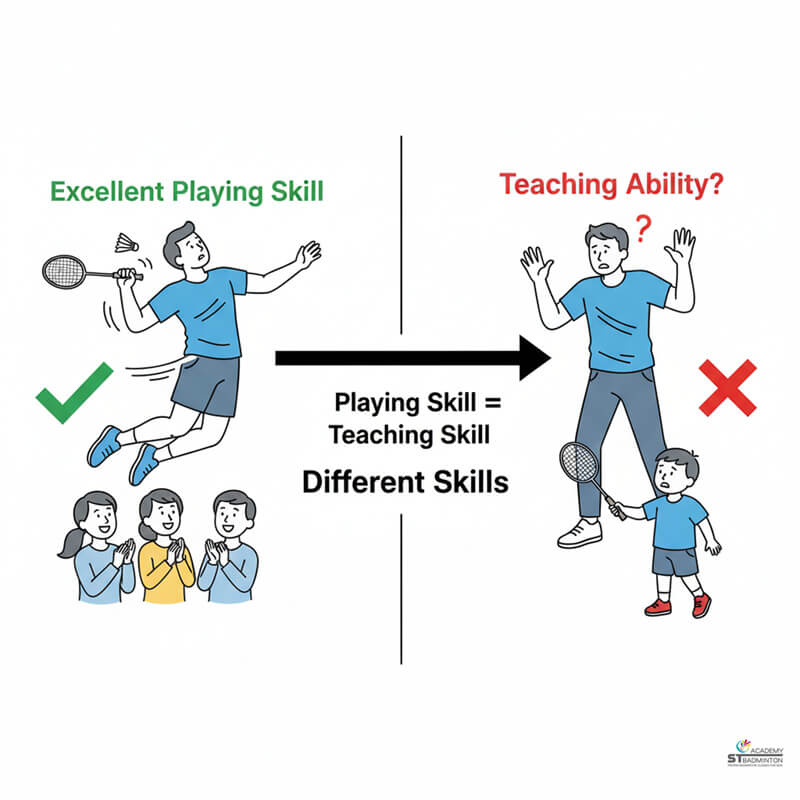Welcome to ST Badminton Academy’s badminton training in Malaysia! I’m a badminton training expert and am excited to talk about how you can use training to develop your game sense. Badminton is an amazing sport that requires skill and strategy more than anything else. It’s all about anticipating the opponent’s shots, reading their body language, and understanding when to take risks or play conservatively.
That’s why having great game sense is so important in badminton! Through proper badminton training drills and exercises, anyone can increase their awareness of the court and become better at making split-second decisions during games. In this article, I’ll explain what good game sense looks like, as well as provide tips on how to practice it through specialized drills and techniques. Let’s get started!
What Is Good Game Sense?
When I think of badminton, the phrase ‘good game sense’ often comes to mind. But what does it really mean? Well, contrary to popular belief, good game sense isn’t some magical power that only a few possess – it is an essential skill for any competitive badminton player looking to take their game to the next level! Good game sense involves both court positioning and stroke mechanics so you can anticipate your opponent’s moves and make better decisions during a rally.
You may be wondering: How do I develop my own game sense? It all starts with understanding how the different components of the sport work together. As a beginner, mastering basic skills such as control and accuracy will help you become more confident on the court. You should also try to understand strategies like attack and defense in order to outplay your opponents. Additionally, familiarizing yourself with common court formations or types of shots used by advanced players can give you insight into how they approach each point.
All these elements combined create an environment where opportunities arise quickly; this enables players to respond spontaneously and accurately without having to think too much about their shot selection or movement around the court. Developing good game sense takes practice but once achieved, it gives players a huge advantage over their opponents every time they step onto the court – something no amount of training can ever replace!
Strategies To Improve Game Sense
Drill variation is one of the most important strategies for developing your game sense. By varying drills and focusing on different aspects of the game, you can develop a better understanding of how to use technique effectively in matches.
This includes working on specific shots like smashes or drops, as well as practicing footwork patterns that will help you move around the court more easily when playing points. Varying up your drill sessions regularly will keep your training interesting while also helping you to develop an improved understanding of badminton strategy and tactics.
Game analysis is another effective way to improve your game sense. Watching professional players compete or analyzing videos of yourself during practice can be great learning tools. When watching other players, try to focus on subtle details such as how they position their body before executing a shot, or where they place their feet during rallies.
Likewise, watch recordings of yourself during practice and take note of what areas need improvement – this could include adjusting footwork, improving accuracy with certain shots or increasing power behind others.
Having good game sense requires lots of hard work and dedication but by implementing these two strategies into your regular training routine you’ll soon start seeing improvements in your badminton skills. With increased awareness about positioning and movement on court, transitioning into the next section about footwork drills for increased mobility should come naturally!
Footwork Drills For Increased Mobility
Picture this: you’re on the badminton court, surrounded by your opponents. You feel confident in your ability to move around the space quickly and accurately, allowing yourself to get into position for those critical net shots and tracking drills that will give you the edge over your opponents. That’s what footwork drills are all about – getting you ready for anything the game throws at you.
Footwork drills help develop mobility as well as agility, both of which are key components of successful badminton players. Drills such as side-to-side shuttle runs can improve lateral movement while also teaching coordination and balance.
Forward/backward shuttles and circle running provides an intense cardiovascular workout that helps build endurance and speed. Finally, sprinting or jumping exercises can help strengthen leg muscles so they can respond more efficiently when lunging after a shot or moving back to the base position.
With regular practice, these drills will become second nature and with improved response time comes increased confidence in any situation; whether it be a singles match or doubles match against experienced opponents who have mastered forehand and backhand techniques. With improved footwork skills under your belt, you’ll soon be able to take control of any rally with ease!
Forehand And Backhand Techniques
I’m going to help you develop your game sense by giving you some tips on forehand and backhand techniques. The key is to practice and focus on shot placement, along with developing proper racket control.
When it comes to forehands, the first thing I recommend doing is learning how to use a continental grip. This will allow for easier access of shots like smashes and dropshots, as well as more power behind them. Additionally, be sure to keep in mind where you want the shuttlecock to go so that you can place your shots more accurately. To do this effectively, use slow-motion drills while practicing so that you can focus on proper technique and footwork.
For backhands, start off by learning how to hold the racket correctly – always make sure that your thumb is facing up when gripping the handle! It’s important not to rush through any stroke; take time to aim at each point before executing the shot. As with forehands, make sure that you are focusing on placing the shuttlecock in an optimal spot on the court instead of just swinging away wildly. By doing these things properly and consistently, it won’t take long for your game sense and badminton skills to improve drastically!
Now let’s look at serving drills for accuracy – those require a whole different level of concentration!
Serving Drills For Accuracy
Having a solid foundation with forehand and backhand techniques is essential for any badminton player. Now it’s time to move on to the next step of developing your game sense: serving drills for accuracy. Serves are an important aspect of badminton, as they can help you control the flow of the match. To improve your ability to serve accurately, there are several drill variations that you should practice consistently.
The first one involves having two players stand on opposite sides of the court and hit short serves across to each other in quick succession. The goal here is to hit three consecutive serves into the same spot without missing or letting them go out of bounds. With this drill, you’ll be able to gauge how consistent your serves are and focus on improving areas where necessary.
Another great drill variation is performing service reps from different parts of the court while aiming at a target area within the opponent’s half. This will allow you to develop better shot placement and make sure that your opponents have less time to react appropriately toward incoming shots. By practicing both these drills regularly, you’ll be well equipped with improved serving skills and greater accuracy when playing competitively against others. Moving forward, let us discuss defensive strategies which can help sharpen reaction times while defending against strong smashes and drives..
Defensive Strategies To Improve Reaction Time
Sharpening one’s game sense is like honing a diamond. With the right training and drills, it can be polished to an impressive shine. Badminton players who wish to develop their game sense should focus on defensive strategies that help improve reaction time.
The key components of such strategies include having sufficient drill variety and shot selection. Every player has certain shots they are more comfortable with, so it is important for them to mix up their drills by incorporating different elements from each type of shot.
This will not only increase their confidence in executing those shots but also make them better at reading other players’ moves during a match. Alongside this, varying the speed, placement, and spin while playing against opponents helps build anticipation skills that come into play when defending against incoming shots.
In addition to technical execution, mental training exercises are essential for developing a game sense as well. Such exercises help players understand how best to maneuver around the court and calculate risks associated with making certain decisions during gameplay scenarios.
To effectively transition these mental tactics into real-life situations requires continuous practice under pressure – something players can gain through regular matches or simulated games in training sessions
Mental Training Exercises
The key to developing game sense in badminton lies in mental training exercises. These can help improve focus and visualization skills, enabling athletes to perform more effectively on the court.
First and foremost, it’s important to develop a clear vision of success while playing. This means visualizing each shot with precision, focusing on the desired result instead of the potential outcomes that may arise from any given move or situation. A visualization is an essential tool for improving your game sense as you learn how to react quickly and accurately during matches.
Another great way to sharpen your game sense is by practicing drills that require quick decision-making. For example, setting up scenarios where you have limited time to make a choice between two shots can help refine your reflexes and give you confidence when facing opponents who are constantly changing their strategies mid-match. Additionally, incorporating drills that involve multiple players will also allow you to anticipate what other players might do next so you can adapt accordingly.
By engaging in this kind of mental training regularly, badminton players can gain invaluable insights about their own playstyle and strengthen their ability to stay focused under pressure. With enough practice and dedication, these skills will become second nature and provide a solid foundation for adapting to opponents’ styles of play.
Adapting To Opponents’ Styles Of Play
Badminton is a sport that requires players to be aware of their opponents and adjust accordingly. To develop your game sense, it’s important to practice adapting to different styles of play. According to the Badminton World Federation (BWF), elite badminton players make an average of 15 decisions per point. That shows just how crucial it is for any player looking to improve her game sense to focus on quick decision-making in order to gain the upper hand over opponents.
Here are four ways you can use badminton training to help you adapt quickly and effectively:
| Ways to Adapt Quickly and Effectively in Badminton Training: |
|---|
| – Developing Awareness: |
| – Be mindful of your court positioning to quickly adapt to your opponent’s changes in tactics or position. Knowing the best response against them enhances your overall awareness during a match. |
| – Analyzing Tactics: |
| – Recognize patterns in your opponent’s playing technique after they have established their style. This awareness allows you to strategize appropriately, adapting your game plan to counter their tactics effectively. |
| – Utilizing Footwork: |
| – Improve your footwork to move around the court more efficiently. Enhanced footwork enables quicker responses during a match, ensuring you can adapt to various situations effectively. |
| – Practicing Patience: |
| – When facing aggressive opponents, practice patience and wait for the right opportunity before making a shot. Avoid letting impatience affect your decision-making, ensuring you make strategic moves during the match. |
| By focusing on developing awareness, analyzing tactics, utilizing efficient footwork, and practicing patience, you can adapt quickly and effectively during badminton training, enhancing your overall performance on the court. |
By regularly practicing these techniques through drills, exercises, and matches, badminton players can learn how to assess situations rapidly and react accordingly in order to outplay their adversaries with ease!
Frequently Asked Questions

What Is The Best Type Of Racket To Use For Badminton?
Finding the best type of racket for badminton can be a challenge. As an experienced badminton training expert, I recommend using a lightweight racket with good balance and control to ensure maximum accuracy in your shots.
When you’re looking for a racket, consider your fitness level, as well as what kind of footwork drills you’ll be doing on the court. The right racket should aid your natural skills rather than hinder them – so it’s important to find one that suits both your current needs and those of any future development goals! Other than choosing a good racket and also remember to choose the best racket restring in Malaysia.
What Is The Best Way To Warm Up Before A Badminton Match?
When it comes to badminton warm-ups, there are a few key elements that you should focus on. Footwork drills are essential for improving your agility and speed during the match – they will also help with game strategy planning as well! Start off by doing some light jogging and dynamic stretching exercises to get your body warmed up before gradually increasing intensity with skipping, side shuffles, lunges and other footwork drills.
Additionally, practice swinging your racket in coordination with different types of shots so that you can feel comfortable executing them during the actual match. By doing these activities prior to playing, you’ll be able to perform at a higher level and develop stronger game sense!
What Is The Best Way To Practice Badminton Alone?
Practicing badminton alone is one of the best ways to hone your skills and develop your game sense. The key is to focus on drills that help you with your footwork, as this will ultimately be the foundation for any successful match.
Start off by playing simple games such as bouncing a shuttlecock against a wall and trying to hit it back without dropping it. You could also create obstacle courses with cones or other objects as targets for you to aim at while moving around the court. This type of training emphasizes agility, accuracy, and control – all essential elements in badminton.
What Is The Best Way To Improve Endurance For Badminton?
If you’re looking to improve your badminton endurance, footwork drills are the way to go. They’ll help increase the amount of time you can stay on the court and build up your stamina for long matches. In addition, shuttle control drills will also assist in developing your game sense by teaching you how to manage a rally and maintain control over the shuttle. These exercises combined will definitely give you an edge when it comes to outlasting your opponents!
How Much Time Should I Dedicate To Badminton Training?
When it comes to badminton training, the amount of time you dedicate to practice is essential for improving your game. Ideally, you should set aside at least two hours a day for drill sets and court positioning exercises that will help strengthen your skillset. Depending on how much progress you want to make in terms of skill development, you could even increase this time allotment if needed – just remember not to overexert yourself!
Learn Game Sense in Professional Badminton Training Malaysia
Having the right equipment and a comprehensive warm-up is essential for any badminton player who wants to improve their game. Practicing alone is also important, as it allows you to focus on specific skills and develop your game sense. To keep improving, aim to dedicate at least 30 minutes of practice every day, focusing on endurance exercises such as shuttle runs or court sprints.
Taking regular breaks will help too – don’t burn yourself out! With dedication and commitment, you can rise above the competition like a phoenix from the ashes. So go ahead: pick up that racket and start training today; your future self will thank you for it!





